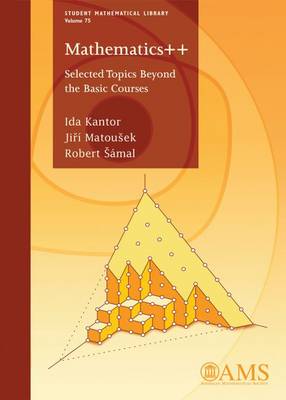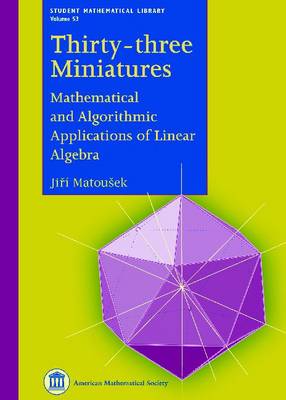Student Mathematical Library
2 total works
Mathematics is a concise introduction to six selected areas of 20th century mathematics providing numerous modern mathematical tools used in contemporary research in computer science, engineering, and other fields. The areas are: measure theory, high-dimensional geometry, Fourier analysis, representations of groups, multivariate polynomials, and topology. For each of the areas, the authors introduce basic notions, examples, and results. The presentation is clear and accessible, stressing intuitive understanding, and it includes carefully selected exercises as an integral part. Theory is complemented by applications-some quite surprising-in theoretical computer science and discrete mathematics. The chapters are independent of one another and can be studied in any order. It is assumed that the reader has gone through the basic mathematics courses. Although the book was conceived while the authors were teaching Ph.D. students in theoretical computer science and discrete mathematics, it will be useful for a much wider audience, such as mathematicians specializing in other areas, mathematics students deciding what specialization to pursue, or experts in engineering or other fields.
This volume contains a collection of clever mathematical applications of linear algebra, mainly in combinatorics, geometry, and algorithms. Each chapter covers a single main result with motivation and full proof in at most ten pages and can be read independently of all other chapters (with minor exceptions), assuming only a modest background in linear algebra. The topics include a number of well-known mathematical gems, such as Hamming codes, the matrix-tree theorem, the Lovasz bound on the Shannon capacity, and a counterexample to Borsuk's conjecture, as well as other, perhaps less popular but similarly beautiful results, e.g., fast associativity testing, a lemma of Steinitz on ordering vectors, a monotonicity result for integer partitions, or a bound for set pairs via exterior products. The simpler results in the first part of the book provide ample material to liven up an undergraduate course of linear algebra. The more advanced parts can be used for a graduate course of linear-algebraic methods or for seminar presentations. Table of Contents: Fibonacci numbers, quickly; Fibonacci numbers, the formula; The clubs of Oddtown; Same-size intersections; Error-correcting codes; Odd distances; Are these distances Euclidean?; Packing complete bipartite graphs; Equiangular lines; Where is the triangle?; Checking matrix multiplication; Tiling a rectangle by squares; Three Petersens are not enough; Petersen, Hoffman-Singleton, and maybe 57; Only two distances; Covering a cube minus one vertex; Medium-size intersection is hard to avoid; On the difficulty of reducing the diameter; The end of the small coins; Walking in the yard; Counting spanning trees; In how many ways can a man tile a board?; More bricks--more walls?; Perfect matchings and determinants; Turning a ladder over a finite field; Counting compositions; Is it associative?; The secret agent and umbrella; Shannon capacity of the union: a tale of two fields; Equilateral sets; Cutting cheaply using eigenvectors; Rotating the cube; Set pairs and exterior products; Index. (STML/53)

